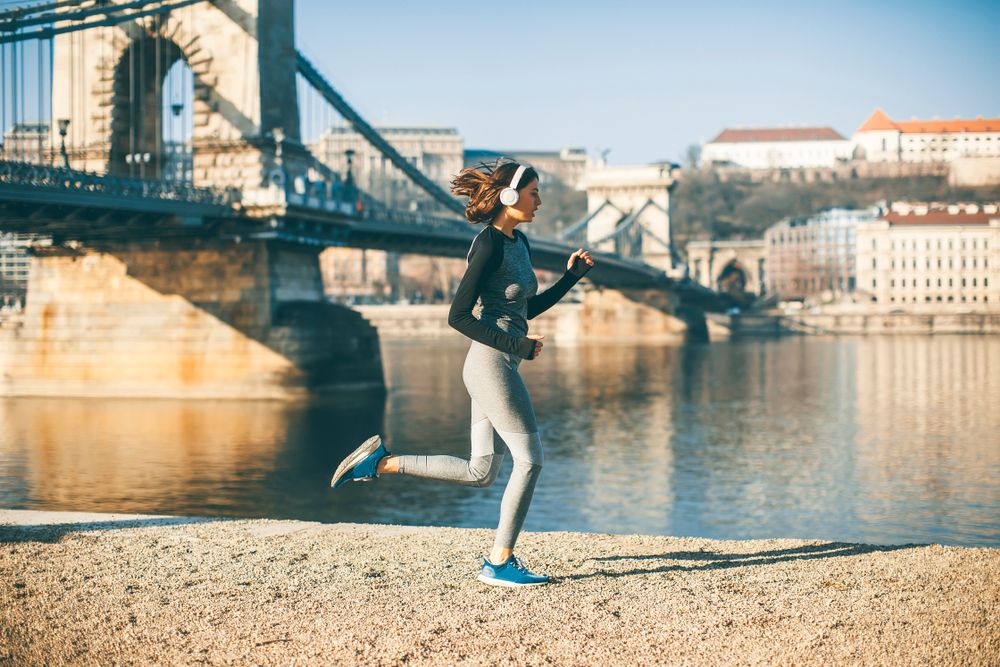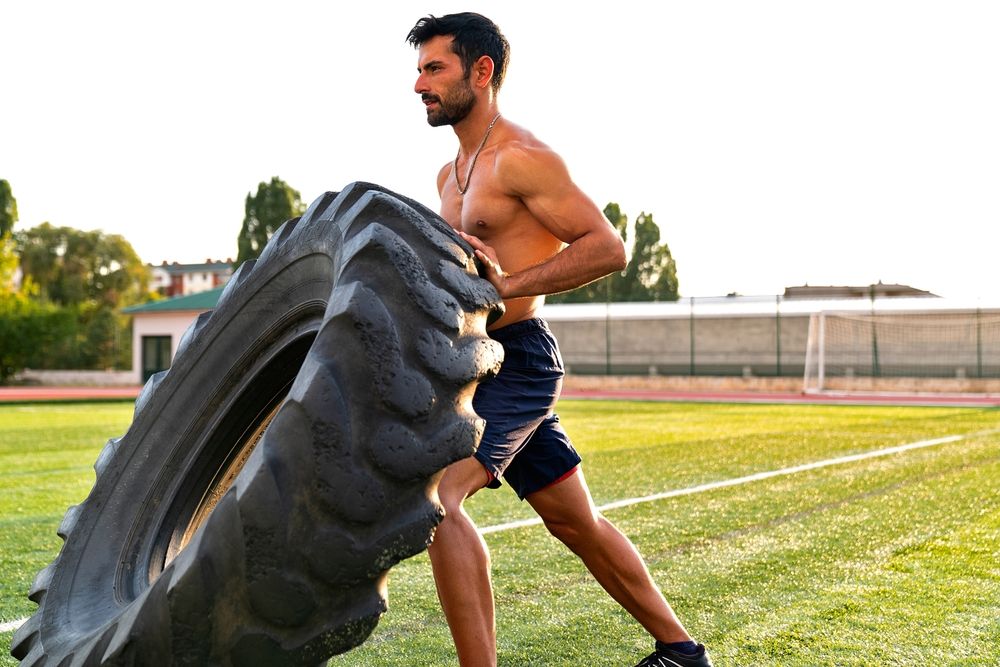
Strength training isn't just about lifting weights—it's about how your muscles work together as a unified system. Enter the concept of the kinetic chain, which treats your body as a connected network of joints and muscles working in harmony. When you train with the kinetic chain in mind, you’re not just isolating muscles—you’re training your entire body to move more efficiently, lift heavier, and build serious strength. Whether your goal is strength, hypertrophy, or functional fitness, focusing on kinetic chain exercises can help you achieve results faster.
So, what exactly is the kinetic chain? Think of it like a chain reaction: when one joint moves, others follow. This interconnected system means that movement in your shoulder influences your back, hips, knees, and beyond. Instead of targeting individual muscles, training these movement patterns improves coordination, prevents injuries, and—bonus—leads to bigger gains. In other words, training the kinetic chain helps you build more muscle, more efficiently.
Let’s dive into the science behind the kinetic chain and explore 10 of the best exercises for building stronger, bigger muscles. You’ll discover why these moves are so effective, which muscles they target, and whether they’re classified as open or closed kinetic chain exercises. Plus, I’ll provide some killer set and rep recommendations to kickstart your routine. Ready to get started?
Let’s dive into the science behind the kinetic chain and explore 10 of the best exercises for building stronger, bigger muscles. You’ll discover why these moves are so effective, which muscles they target, and whether they’re classified as open or closed kinetic chain exercises. Plus, I’ll provide some killer set and rep recommendations to kickstart your routine. Ready to get started?
What is the Kinetic Chain?

The kinetic chain refers to the body’s interconnected system of joints and muscles working together to perform movements. When you engage in any activity, your body doesn’t rely on a single muscle; instead, multiple muscles and joints collaborate. For instance, when throwing a punch, your shoulder, elbow, and wrist generate the motion, while your core and legs provide stability. This chain of movement is why understanding and training the kinetic chain is crucial for both optimizing performance and preventing injury.
By training with the kinetic chain in mind, you engage not only the primary muscles (like the chest or quads) but also the stabilizing muscles that support the movement. This approach builds a stronger, more functional body that is less susceptible to injury and better equipped to handle heavier training loads over time. Additionally, kinetic chain training enhances your body’s ability to transfer energy efficiently between different muscle groups, resulting in more powerful, coordinated movements.
Open vs. Close Kinetic Chain Exercises
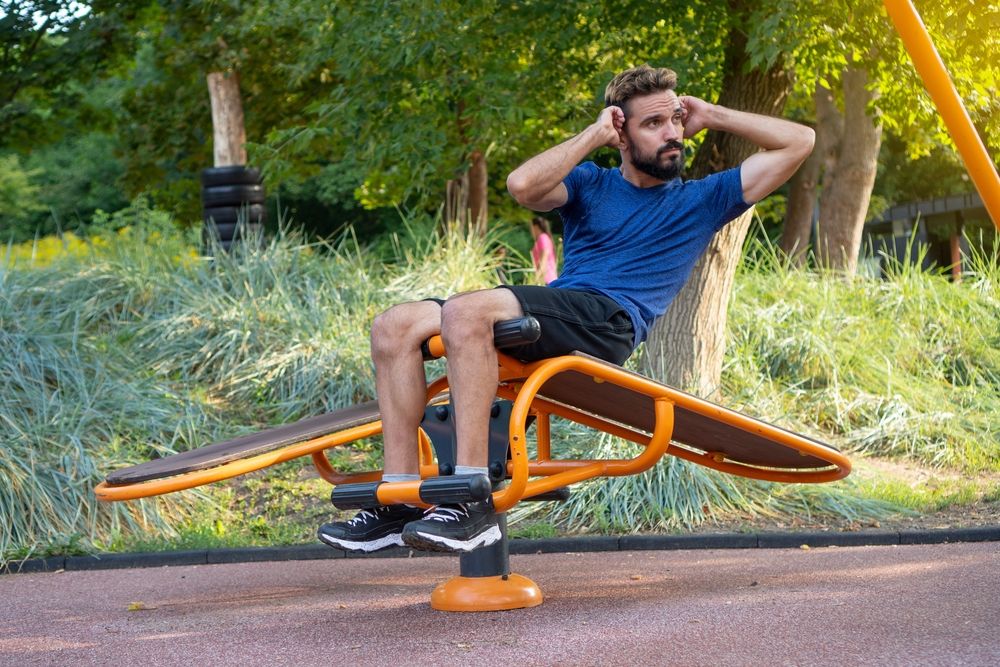
Kinetic chain exercises fall into two categories: open and closed. Open kinetic chain exercises involve movements where the hand or foot is free to move, such as a leg extension or bicep curl. These exercises typically isolate a specific muscle or joint, making them ideal for targeting specific areas.
In contrast, closed kinetic chain exercises involve movements where the hand or foot remains in a fixed position, like during a squat or pushup. These exercises engage multiple joints and muscles simultaneously, making them more functional and effective for building overall strength and size.
Both open and closed kinetic chain exercises play an important role in a balanced workout routine. Closed-chain exercises are more effective for building full-body strength and muscle mass, while open-chain exercises are great for isolating and strengthening individual muscles. By incorporating both types of exercises into your training, you can maximize muscle growth and ensure balanced development across your body.
10 Kinetic Chain Exercises to Build Stronger, Bigger Muscles
Incorporating kinetic chain exercises into your routine is key to developing a strong foundation and achieving significant muscle growth. The kinetic chain refers to the interconnected muscles and joints that work together during movement. By targeting these movement patterns, you'll build bigger, stronger muscles and improve functional strength and stability.
Here are 10 powerful kinetic chain exercises designed to engage multiple muscle groups and promote overall muscle growth. From foundational moves like squats to dynamic exercises like medicine ball slams, these exercises will help you build a well-rounded, powerful physique.
Exercise #1: Squats (Close Chain)

The squat is a powerhouse exercise for building lower-body strength and muscle mass. It engages multiple muscle groups, including the quads, hamstrings, glutes, and core, making it a staple for overall leg development and functional strength. Squats not only enhance muscle size in the lower body but also improve your ability to handle heavier weights while stabilizing your core.
- Stand with your feet shoulder-width apart, toes slightly pointed outward.
- Place a barbell across your upper back, gripping it just outside shoulder-width.
- Engage your core, push your hips back, and bend your knees, lowering your body as if sitting into a chair.
- Keep your chest up and maintain a straight back throughout the movement.
- Lower yourself until your thighs are parallel to the ground or slightly below.
- Press through your heels to rise back to the starting position, fully extending your hips and knees.
- Ensure your knees align with your toes and avoid letting them cave inward.
- Perform 4 sets of 8 to 12 reps using moderate to heavy weight. Rest for 90 seconds between sets.
Exercise #2: Deadlift (Closed Chain)

The deadlift is a powerful full-body exercise that primarily targets the posterior chain, including the hamstrings, glutes, and lower back, while also engaging the traps and core. This compound movement is highly effective for building strength and muscle mass across multiple key areas. Deadlifts also improve posture, balance, and overall power by requiring coordinated effort from several muscle groups and joints.
- Stand with your feet hip-width apart, positioning the barbell over the middle of your feet.
- Bend at your hips and knees to grab the bar with an overhand grip, keeping your back flat and chest up.
- Drive through your heels, extending your hips and knees together to lift the barbell, keeping it close to your body.
- Once fully standing, reverse the motion by pushing your hips back and bending your knees to lower the barbell back to the ground.
- Maintain a neutral spine and engage your core throughout the lift.
- Perform 4 sets of 6 to 8 reps using moderate-heavy weight. Rest for 120 seconds between sets.
Exercise #3: Bench Press (Open Chain)
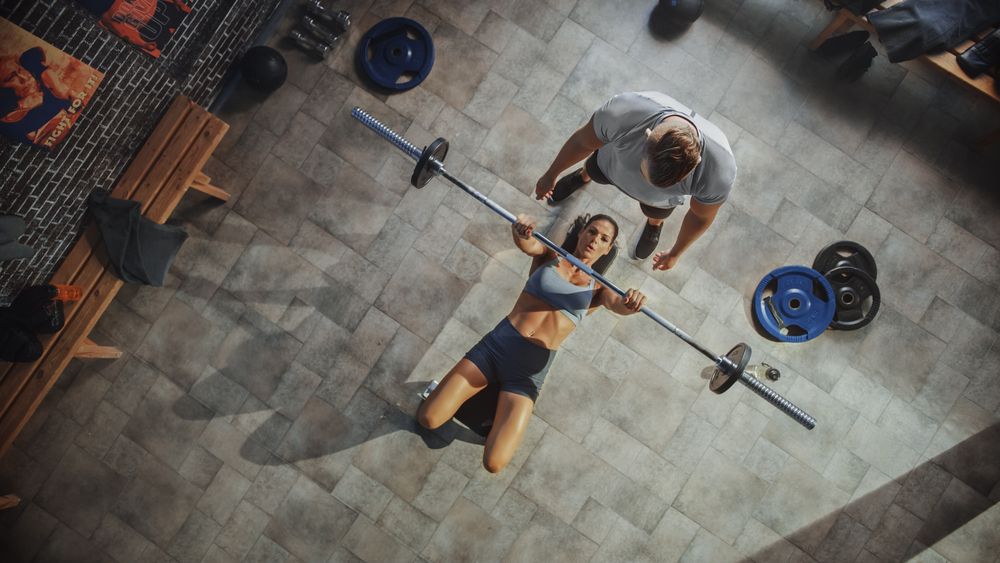
The bench press is a highly effective exercise for building upper-body pushing strength and increasing chest size. It primarily targets the chest, shoulders, and triceps, making it a key movement for developing upper-body muscle mass. Consistently incorporating the bench press into your routine can boost your pressing power and improve overall upper body strength and aesthetics.
- Lie flat on a bench with your feet planted firmly on the ground.
- Grip the barbell with your hands slightly wider than shoulder-width apart.
- Unrack the barbell and lower it slowly to your chest, keeping your elbows at a 45-degree angle from your torso.
- Press the barbell back up to the starting position, fully extending your arms.
- Engage your core and avoid excessive arching of your lower back.
- Keep your shoulder blades retracted and chest lifted throughout the movement.
- Perform 4 sets of 8 to 10 reps with moderate to heavy weight. Rest for 90 seconds between sets.
Exercise #4: Pull-up (Close Chain)

Pull-ups are a powerful bodyweight exercise that significantly boosts upper-body pulling strength and muscle development. They primarily target the lats, biceps, shoulders, and core, requiring substantial upper-body strength and endurance. Regularly incorporating pull-ups into your workout can improve upper-body definition and overall strength.
- Grip a pull-up bar with your hands slightly wider than shoulder-width apart, palms facing away from you.
- Engage your core and pull yourself up until your chin clears the bar, squeezing your shoulder blades together at the top.
- Lower yourself back down in a controlled motion until your arms are fully extended.
- Avoid swinging or using momentum, focusing on using your back and arms to perform each rep.
- Perform 4 sets of 6 to 10 reps. Add weight if possible for an extra challenge. Rest for 90 seconds between sets.
Exercise #5: Overhead Press (Open Chain)
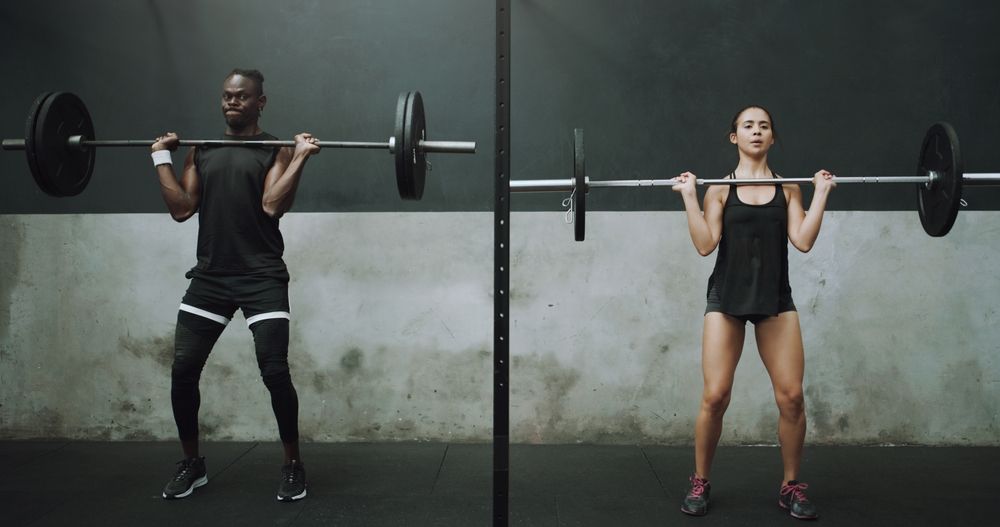
The overhead press is a key exercise for developing shoulder and upper-body pressing strength. It primarily targets the shoulders, triceps, and upper chest while also engaging the core for stability. This movement enhances shoulder strength, pressing power, and overall upper-body muscle size.
- Stand with your feet shoulder-width apart and grip the barbell with an overhand grip, hands slightly wider than shoulder-width.
- Start with the barbell resting on your shoulders, elbows bent and slightly in front of the bar.
- Press the barbell overhead, fully extending your arms while keeping your core engaged and back straight.
- Lower the barbell back to your shoulders in a controlled manner.
- Avoid arching your lower back and focus on smooth, steady movements throughout.
- Perform 4 sets of 8 to 10 reps with moderate weight. Rest for 60 seconds between sets.
Exercise #6: Lunges (Close Chain)
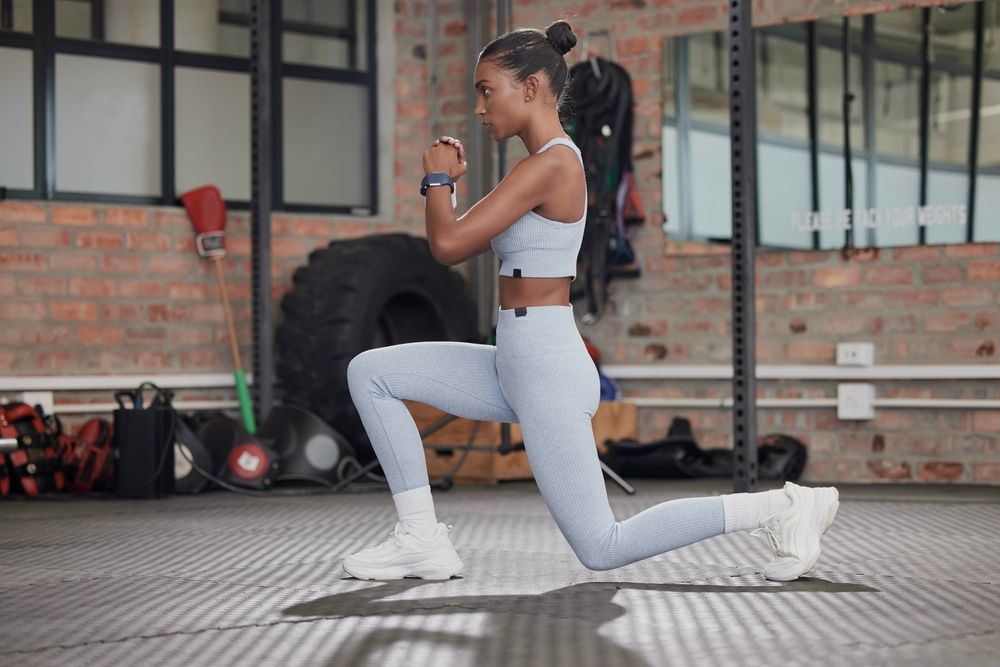
Lunges are excellent for building lower-body strength, stability, and balance. They target the quads, hamstrings, glutes, and calves, providing a comprehensive workout for lower-body development. Lunges also improve unilateral strength and coordination, making them beneficial for athletic performance and functional movements.
- Stand upright with your feet hip-width apart.
- Step forward with one leg and lower your body until your front thigh is parallel to the ground and your back knee almost touches the floor.
- Keep your torso upright and ensure your front knee stays aligned with your toes.
- Push through your front heel to return to the starting position, then repeat the movement with the opposite leg.
- Focus on controlled movements and proper alignment to maximize results and prevent injury.
- Perform 3 sets of 10 to 12 reps per leg. Rest for 90 seconds between sets.
Exercise #7: Lat Pulldown (Open Chain)

The lat pulldown is an effective exercise for targeting the upper-back muscles, especially the lats, while also engaging the biceps and shoulders. This movement helps improve pulling strength and contributes to a wider, more defined back. Incorporating lat pulldowns into your routine enhances upper-body strength and promotes muscular balance.
- Sit at the lat pulldown machine with your knees securely positioned under the pads.
- Grasp the bar with a wide overhand grip and pull it down toward your chest, leaning slightly back.
- Engage your back muscles and squeeze your shoulder blades together as you bring the bar down.
- Slowly return the bar to the starting position, extending your arms fully while maintaining control.
- Avoid using momentum or excessive swinging during the exercise.
- Perform 4 sets of 10 to 12 reps with moderate weight. Rest for 60 seconds between sets.
Exercise #8: Barbell Row (Open Chain)
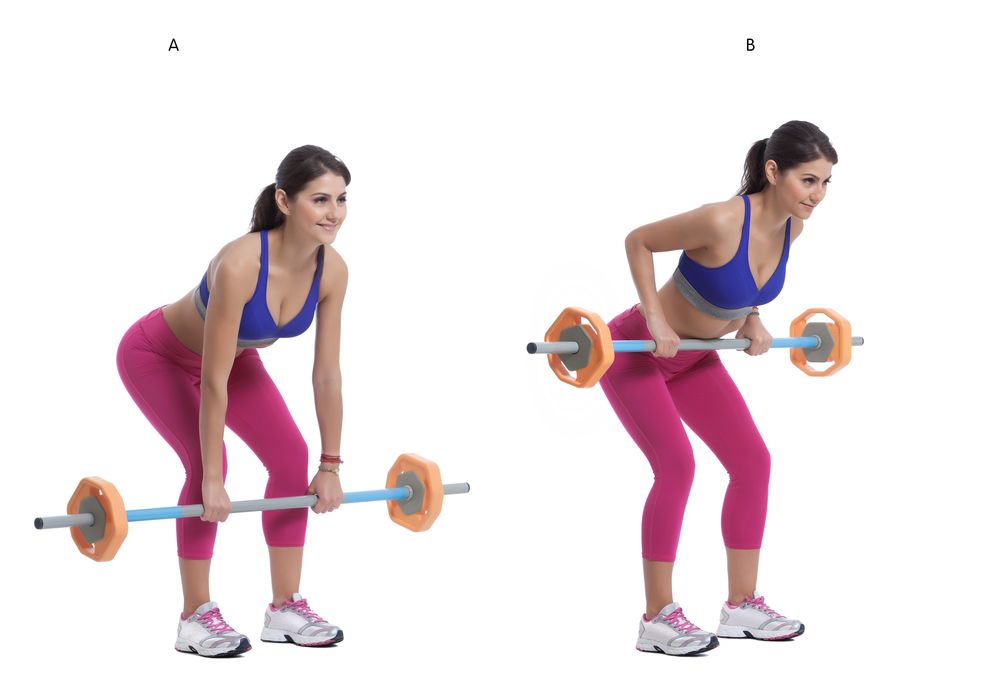
The barbell row is a powerful exercise for building upper back strength and muscle mass. It targets the lats, rhomboids, traps, and rear deltoids, helping to increase back thickness and improve posture. Incorporating barbell rows into your routine will contribute to a more muscular and balanced upper body.
- Stand with your feet hip-width apart and hold the barbell with an overhand grip.
- Bend your knees slightly and hinge at the hips, keeping your back flat and chest lifted.
- Pull the barbell toward your lower ribcage, squeezing your shoulder blades together at the top.
- Lower the barbell back down in a controlled motion until your arms are fully extended.
- Avoid rounding your back or using excessive momentum during the lift.
- Perform 4 sets of 12 to 15 reps. Rest for 60 to 90 seconds between sets.
Exercise #9: Leg Press (Open Chain)

The leg press is a highly effective exercise for targeting the quads, hamstrings, glutes, and calves, emphasizing overall lower-body strength and muscle growth. It allows for heavy loading of the lower-body muscles while offering stability and support for the back and core. This exercise is excellent for building leg size and strength in a controlled and safe manner.
- Sit on the leg press machine with your back supported and feet shoulder-width apart on the platform.
- Extend your legs to push the platform away, keeping a slight bend in your knees at the top.
- Lower the platform slowly by bending your knees until your thighs are nearly parallel to the platform.
- Push through your heels to return to the starting position.
- Maintain control throughout the movement and avoid locking your knees at the top.
- Perform 4 sets of 10 to 12 reps with heavy weight. Rest for 90 to 120 seconds between sets.
Exercise #10: Medicine Ball Slams (Close Chain)
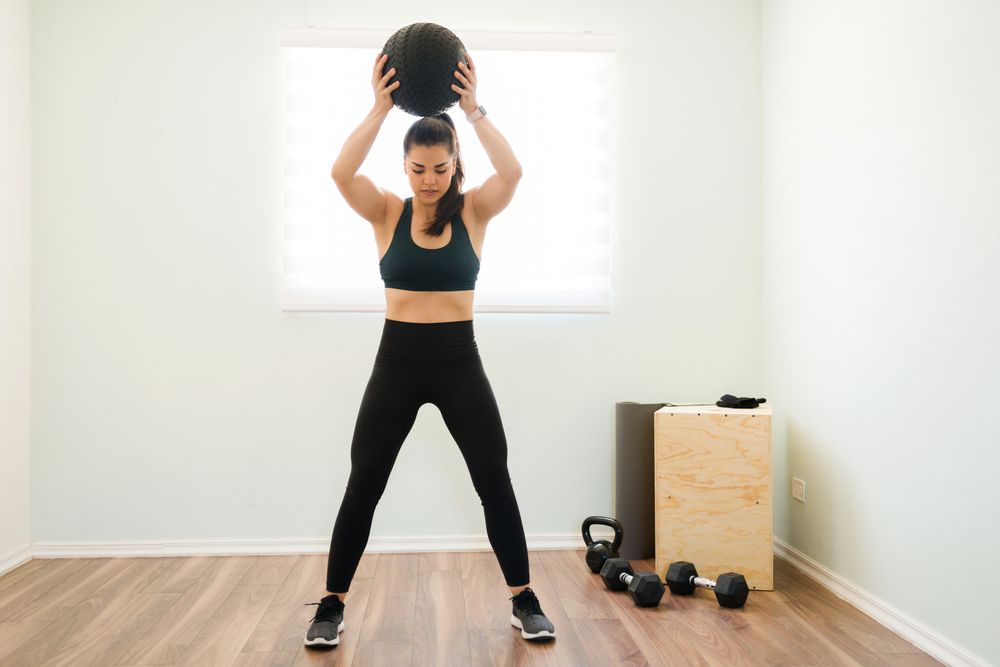
Medicine ball slams are a dynamic, full-body exercise that combines strength and power, targeting the core, shoulders, and legs. They help improve explosive power, athleticism, and conditioning, making them excellent for building functional strength and muscular endurance.
- Stand with your feet shoulder-width apart, holding a medicine ball overhead with both hands.
- Engage your core and slam the ball to the ground with maximum force, using your entire body to generate power.
- Squat down to retrieve the ball and repeat the slam.
- Focus on maintaining core stability and performing explosive movements throughout the exercise.
- Keep your motions controlled and avoid hyperextending your lower back.
- Perform 3 sets of 10 to 12 reps. Rest for 60 seconds between sets.

